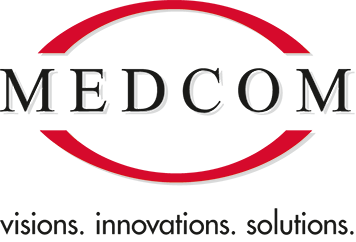Marie Curie Fellowships
Marie Curie Fellowships provide European placements for pre and post-doctoral researchers, usually up to the age of 35, and for experienced researchers. Fellowships are available in any scientific discipline that contributes to the objectives of the Fifth Framework Programme (FP5). Applicants to this activity are young and experienced researchers and host organisations in academia and industry.
MedCom has got three fellowship positions for the Marie Curie Industry Host Fellowship. One of them is still vacant. This fellowship is open to all citizens of the EU and associated countries and is entitled: "Innovative 3D Medical Systems for Treatment and Diagnosis." The candidates will be involved in RTD activities of the company, especially in the following fields:
Development of 'Segmentation and Volumetry Measurement Techniques' to be applied on 3D ultrasound data.
The result of the segmentation stage can be used for severity assessments of cardiac diseases, cancer treatments, etc., by means of volume calculation out of the segmented structured. Another application of the segmentation stage will be labelling and isolation of regions for a surgery planning system. Such segmentation tools can be designed as manual (i.e. drawing), semi-automatic or full automatic algorithms.Development of techniques to combine and visualise several datasets from different image modalities within one basic calculation step (IMAGE FUSION).
The goal is to provide techniques for the fast handling of different datasets like 3D Ultrasound, CT, MRI, etc., within one visualisation step in order to provide new clinical information out of the 'combination' of these devices. The image 'registration' of one dataset to each can be performed manually by specifying corresponding points or semi-automatic, when information
from the devices is included in the registration process. However, we expect a real clinical added value for surgery and cancer treatment
planning by combining the advantages from different imaging devices.Implementation and design of a DICOM I/O interface for 3D ultrasound data.
The DICOM (Digital Imaging and Communications in Medicine) protocol for exchanging medical image data has become standard during the recent years. Since the 3D ultrasound is a rather new tomographic device compared to CT or x-ray, the ultrasound community has just started to define the DICOM standards for the 3D-ultrasound modality. The development includes the literature investigation and probably visits of DICOM meetings in order to receive (or define) the required information.
Benefit for the fellows:
The fellows will get insight in one of the most aggressively growing areas of medical imaging.
The scientific value of the new developments is already given. Due to the novelty of the area, developments of this type have not been there before.
In addition, the commercial value is also significant: 3D medical imaging systems are aggressively gaining market share.
The fellows will learn how to develop software fulfilling the requirements of the CE norm. This procedure is different than the quality assurance for non-medical software. Fulfilling the norm is pre-requirement for commercialising medical software.
